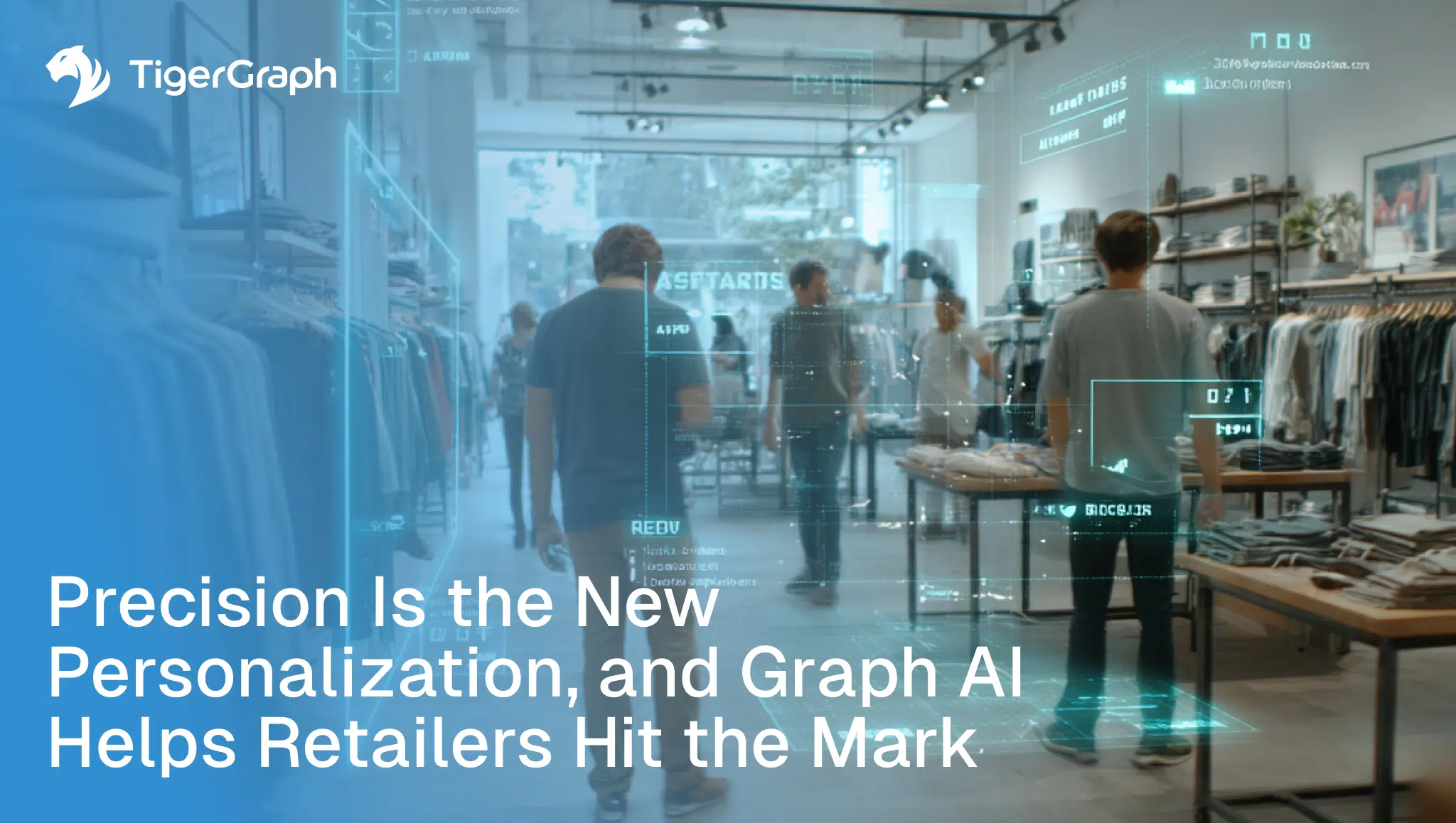Precision Is the New Personalization, and Graph AI Helps Retailers Hit the Mark
Traditional retail personalization strategies have often fallen short. Segment-based campaigns and rules-based engines deliver recommendations that are too broad, too late, or too irrelevant. At best, these experiences feel impersonal; at worst, they feel intrusive or out of touch.
Today’s consumers expect relevance and recognition. They want to be understood across devices and channels in real time, with experiences that reflect their preferences and evolving intent. Brands are expected to keep up as customers browse, compare, switch platforms, and make decisions faster than ever.
And here’s the challenge: intent is fluid, and preferences can shift by the hour. A product searched this morning may be forgotten by afternoon. In this environment, personalization based on static profiles or past behavior alone isn’t just outdated—it can backfire, making customers feel misread instead of understood.
To meet this new standard, retailers must shift from static personalization to precision—responding to live signals, contextual cues, and cross-channel behaviors. That level of agility demands more than data aggregation. It demands a connected understanding of customer behavior—and that’s where graph shines.
Graph AI: Unlocking Real-Time, Contextual Insight
Personalization isn’t just about what a customer did—it’s about understanding why they did it, what they’re likely to do next, and how best to engage them in that exact moment. That’s where graph AI changes the game.
Unlike conventional architectures that silo behavior by channel—web, mobile, email, in-store—graph technology models relationships. It maps how people, products, preferences, and actions interconnect across time and context. The result is a context-rich, behavior-aware model of every customer journey.
However, not all graph technologies are equipped to support real-time retail experiences.
Where general-purpose graph databases may offer modeling flexibility, many fall short when asked to deliver low-latency insights at operational scale. That’s where TigerGraph sets itself apart.
Why TigerGraph Delivers Precision at Scale
TigerGraph is a graph-native, distributed platform purpose-built for performance in data-intensive, real-time environments. Its architecture supports:
- Parallel traversal: TigerGraph explores multi-hop customer-product-behavior relationships across billions of nodes in milliseconds, which is critical for high-traffic, high-volume environments like retail.
- In-graph computation: Rather than exporting logic to external systems, scoring and personalization rules run inside the graph, preserving performance and transparency.
- Streaming data ingestion: Customer activity—clicks, searches, purchases—immediately updates the graph, allowing downstream systems to respond with precision.
With TigerGraph, retailers can unify signals from every customer interaction—across web, mobile apps, in-store visits, and support channels into a single, continuously evolving customer graph. This connected view helps trace intent as it unfolds and identify nuanced behavioral patterns. For example, late-night gift browsing and inventory checks may signal urgent holiday shopping.
Armed with this context, teams can deliver highly relevant recommendations in real time—adapting offers to the customer’s current device, timing, and behavior, without relying on brittle rule sets or retrain models behind the scenes.
This is already playing out in practice. In a collaboration with Kickdynamic, TigerGraph helps brands personalize email content based on static lists or past behavior and by using live graph data to reflect a customer’s real-time behavior. Product displays can be tailored to factors like location, product availability, and recent interactions, creating a more relevant, timely experience even after the email has been sent.
This integration with TigerGraph helps retailers connect the dots between what customers browse, click, and buy, across channels and over time. Instead of relying on outdated rules or broad customer segments, the system updates as new information comes in. That means the recommendations shoppers see reflect what they’re actually interested in right now, not what they looked at last week.
It’s a shift from canned suggestions to something that feels personal and timely, without being pushy or out of sync.
This isn’t just personalization; it’s contextual precision at scale. Graph AI makes it possible, and TigerGraph operationalizes it.
Beyond Personalization: Achieving Precision
Precision isn’t about offering more content but about delivering the right content on the right channel, at the right moment, and in the right tone. That’s the difference between friction and flow and between a sale and a lost opportunity.
Where many personalization tools respond with more data and rules, graph AI takes a more elegant approach. It connects the dots, learns relationships and behavioral norms, and allows retailers to personalize with clarity and nuance, not guesswork.
With graph-powered insight, retailers can:
- Identify micro-intents in real time—like a shift from casual browsing to serious comparison, or a bounce that signals hesitation instead of disinterest.
- Anticipate future needs by observing behavioral arcs, such as customers who begin browsing for others (gifting) or whose loyalty signals start to decline.
- Suppress noise by filtering out irrelevant promotions or redundant product suggestions without manual configuration.
This isn’t just reactive optimization. It’s a shift to proactive experience design, where personalization feels seamless, timely, and trusted. It strengthens loyalty, improves conversion, and respects the customer’s attention span.
Embracing the Future of Retail with Graph AI
In modern retail, milliseconds matter. A brand’s ability to respond in context isn’t a competitive edge—it’s a survival trait. Relying on yesterday’s data, rigid rules, or disconnected systems will slow you down and cause you to miss the moment entirely.
Graph AI offers a better way. It gives retailers the ability to reason across behavior, relationships, and context as they unfold, supporting decisions that are timely, accurate, and aligned with customer intent.
TigerGraph turns that reasoning into action. With a scalable, high-performance graph engine built for operational workloads, it enables real-time personalization that evolves with every click, channel, and change. This is more than personalization—it’s connected intelligence that moves with your customers.
Graph AI helps retailers hit the mark—not by guessing, but by understanding, and TigerGraph helps you do it before your competitors even see it coming. Reach out today to learn how TigerGraph can help you take the lead—while others are still catching up.

